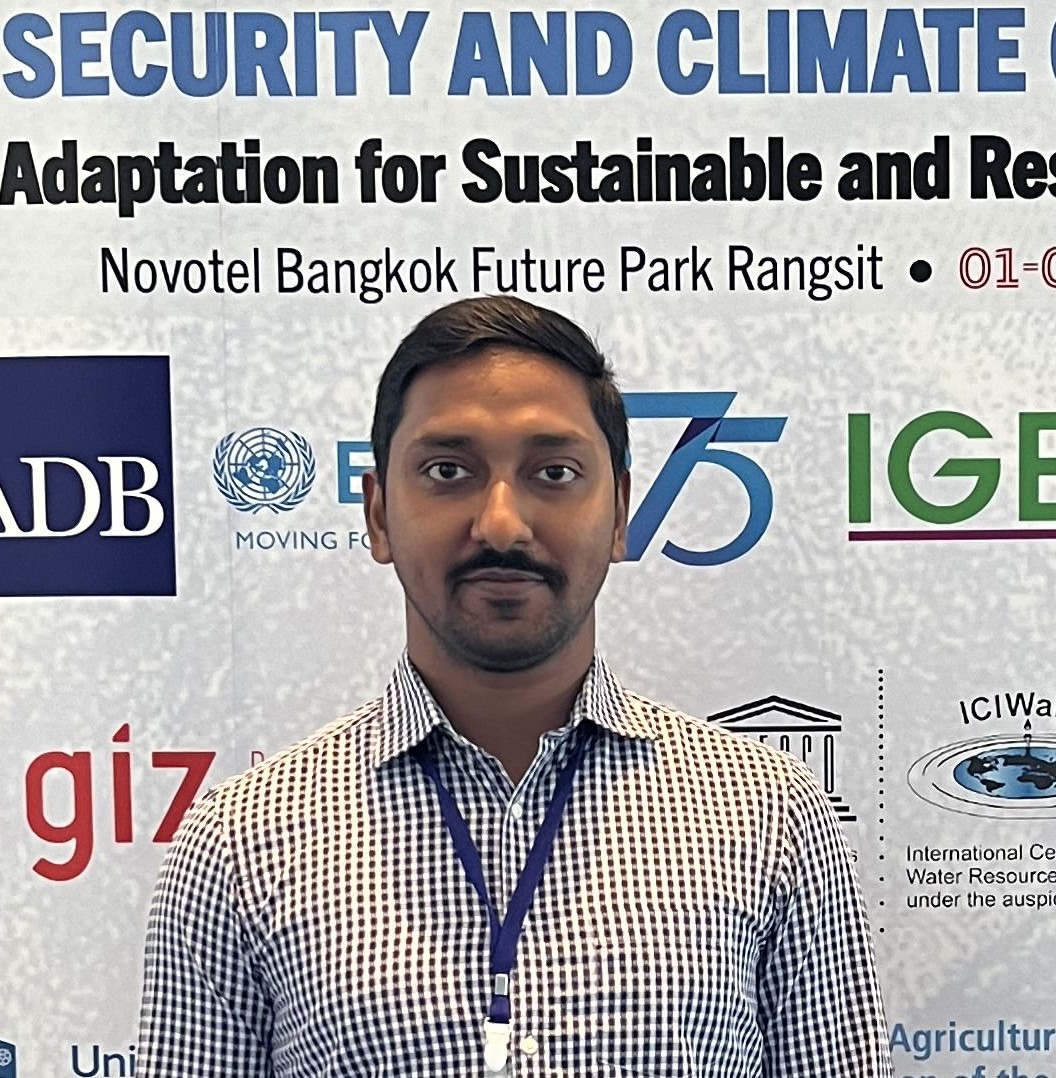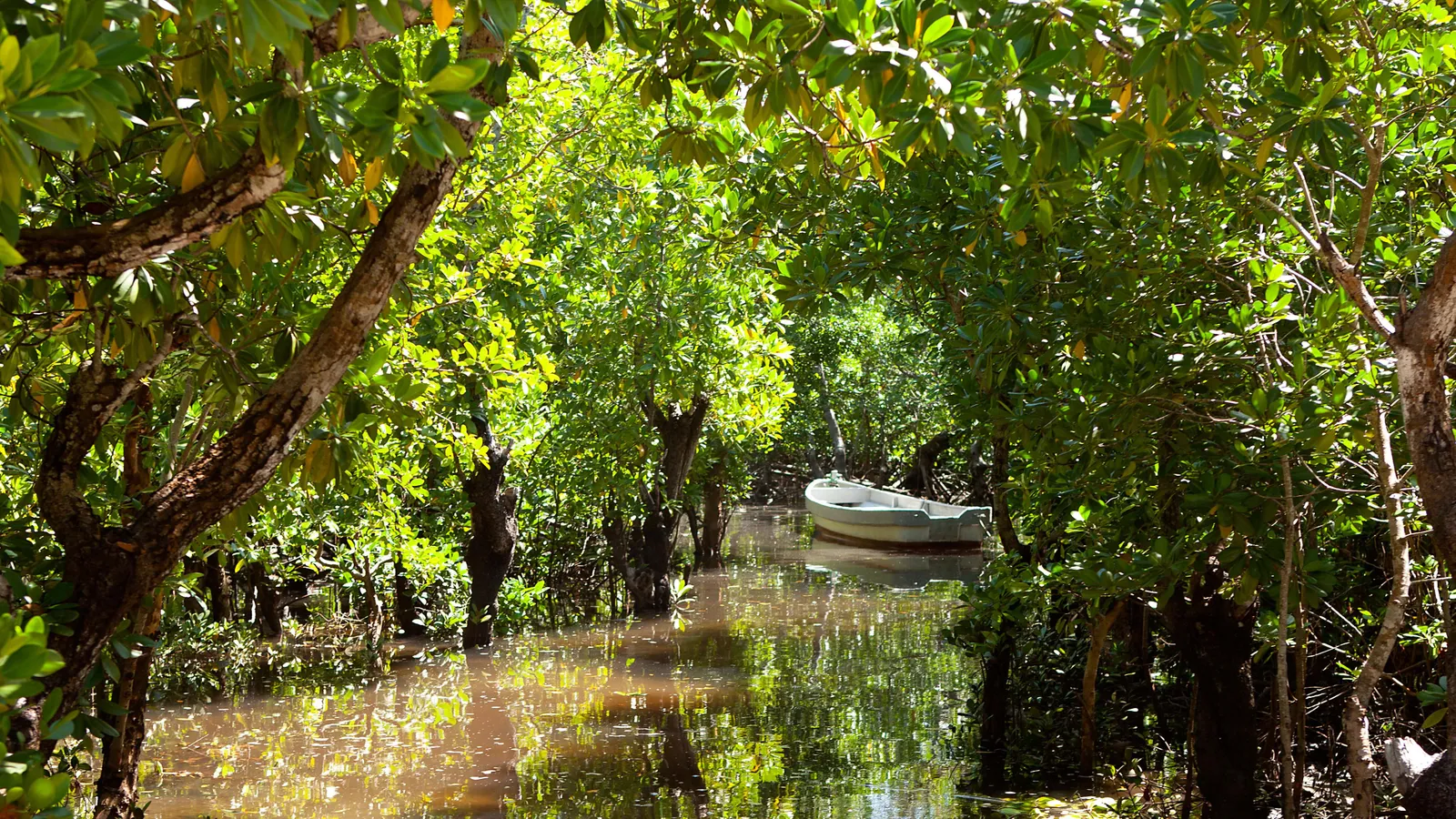South Asia’s contribution to increasing groundwater research
Gupta, M., & Chinnasamy, P. (2022) 'South Asia's contribution to increasing groundwater research' Water Science Policy, 3(16). doi: https://dx.doi.org/10.53014/CXXK7262
- Groundwater plays a pivotal role in sustaining the food security and climate change adaptation of South and Southeast Asia.
- Groundwater depletion is high in Asian regions, compared to global rates. Excessive pumping and unregulated use have severely impacted groundwater levels and quality leading to significant socio-economic and environmental stresses.
- Bibliometrics can help provide a consolidated picture of research trends and patterns of publications under different categories and thereby evaluate the impact of groundwater research from South and Southeast Asia and its contribution to global research.
.png?alt=media&token=67ad01d1-f229-4062-b2ec-727466e7acc7) Word cloud obtained through keywords frequency analysis for groundwater-related research. (Taken from Original Article)
Word cloud obtained through keywords frequency analysis for groundwater-related research. (Taken from Original Article)
Global awareness of groundwater resources has grown over the past few decades. Research in the field has expanded significantly, ranging from targeting specific challenges to designing techniques and building models for better management. However, many studies have been site or objective specific meaning the overall growth and progress of groundwater research has not been tracked. Our study, recently published in Environmental Science and Pollution Research, addresses this gap by applying the bibliometric approach to track and map groundwater research trends and identify research hotspots in South and Southeast Asia. Bibliometric analysis is a popular and rigorous statistical evaluation of large volumes of scientific publications to measure the influence of publications in the scientific community.
The South and Southeast Asian regions, comprising 19 countries, are among the world’s fastest-growing economies and most densely populated regions, hosting about 32% of the global population. The regions have several of the high groundwater-producing aquifers of the globe. Over the decades, the ease of groundwater access has helped alleviate hunger and poverty in many South and Southeast Asian countries by increasing agricultural productivity and stabilising rural incomes. In addition, groundwater provides drinking, domestic and industrial supplies across the urban-rural spectrum, especially during extreme hydro-climatic events like droughts. Together, the two regions are the largest abstractors of groundwater accounting for one-third of global groundwater extraction, i.e., 1,432 billion cubic meters. However, this excessive and unregulated use has led to issues of availability and accessibility of safe and sustainable groundwater in many parts of the region. Therefore, it is useful to track and map research on emerging groundwater issues, technological advancements and effective management solutions in the region using bibliometric analysis. In addition, lessons learned from the highest groundwater extracting regions can aid regions where groundwater use is increasing exponentially.
We collected publication data for all 19 South and Southeast Asian countries published between 1970 and 2020 via Scopus, an open-source database of citations and abstracts of scientific publications. This span of 50 years has also witnessed a substantial increase in groundwater use. The data were manually checked to filter publications of unrelated topics and duplicates.
We evaluated a total of 7,895 groundwater-related documents. Our analysis shows that the average annual growth rate (AAGR – 37%) for groundwater-related studies from the region was four times the global growth rate (AAGR - 9%) over the same period (Fig. 2).
.png?alt=media&token=2625d150-7fe8-453f-9986-3820d2f0c642) Groundwater related publications from South and Southeast Asian countries compared to global groundwater research publications, 1970-2020. (Taken from Original Article)
Groundwater related publications from South and Southeast Asian countries compared to global groundwater research publications, 1970-2020. (Taken from Original Article)
Of the publications analysed, 82% (6,361) were research articles published in journals. We further explored these articles for research output trends, country-wise productivity, institutional distribution and collaborations, subject categories, journal contribution, and author productivity.
The contribution from South Asian countries was six times higher than that of Southeast Asian countries. India has maintained the lead in terms of productivity (4,584 articles), deepening research in different groundwater fields. Research in India has largely been carried out by central and state universities and independent research institutes (Fig. 3). Following India were Pakistan and Malaysia with 309 and 289 articles, respectively. Cambodia, Afghanistan, and Myanmar contributed less than 1% of the total articles published from the region despite also being highly dependent on groundwater resources for domestic and irrigation demands.
.jpg?alt=media&token=7a88c409-39aa-4c70-bf21-04ca6882c7ad) Geographic distribution of groundwater-related studies across South and Southeast Asian countries, 1970-2020. (Taken from Original Article)
Geographic distribution of groundwater-related studies across South and Southeast Asian countries, 1970-2020. (Taken from Original Article)
We observed that over time researchers have developed a pattern of academic cooperation to assess and manage groundwater challenges. Along with intra- and inter-institute collaborations within a home country, collaborations were highest with the researchers from USA (273 articles) and Japan (77 articles). Further, the author contribution trends revealed a predominance of male researchers in the domain, with only one female researcher making it to the top 20 most productive authors identified. However, over the years, it is increasingly recognised that women play a crucial role in working with and managing groundwater resources. Therefore, the scientific community should make efforts to encourage and support female researchers and to reduce the observed gender imbalance.
Based on analysis of 10,240 author keywords, besides ‘Groundwater’ the top five most frequently used keywords were ’Groundwater quality’, ’Geographic information system (GIS)’, ’India’, ’Arsenic’, and ’Fluoride’.
The majority of the articles were focused on groundwater quality, mapping hotspot areas, contaminant transport, and remediation technologies. Among the vast list of groundwater contaminants, inorganic contaminants - arsenic and fluoride - are most widely researched in the regions with 606 and 443 articles published, respectively. As groundwater serves as a vital source of drinking water and irrigation supply in many rural areas, research on suitability of groundwater quality has also been done extensively using a Water Quality Index as an important assessment tool. These research efforts also resonate in the high research productivity of journals like Indian Journal of Environmental Protection (258 articles), Pollution Research (184 articles), and Environmental Monitoring, and Assessment (182 articles)..
An increasing trend, post 2000, was noted in the number of studies related to groundwater depletion and management. Research efforts have been made to understand groundwater behaviour using modelling approaches, quantify the groundwater reserves through remote sensing and GIS techniques, explore interventions and technological solutions to enhance groundwater recharge, and implement better irrigation practices for sustainable management. Along with this, the current trending research themes such as climate change, artificial recharge, and conjunctive use of surface and groundwater resources gained attention.
Looking at the central disciplines of the published groundwater research, productivity was higher in environmental sciences (37%), geology (17%) and agricultural sciences (9%). However, groundwater issues are interrelated with a wide range of disciplines. So, we advocate a more interdisciplinary approach to holistically connect the physical and social aspects of groundwater resources availability and accessibility.
Lastly, we found that good quality and quantity of data are critical to effectively manage groundwater resources. Therefore, we recommend expanding monitoring networks to improve the frequency and volume of groundwater data available. Incorporating crowdsourcing methods has seen positive results in recent years in obtaining supplementary data. Adopting these solutions will lead to more data generation; hence, data mining techniques and machine learning algorithms, will also have to be explored.
Our research demonstrates the usefulness of bibliometric analysis for both established and emerging scholars, as well as the professional community. The analysis helped to track and map the growth, trends and future direction of groundwater research. With this study, it is hoped that the gaps identified will be addressed and improved at the individual and organisational level in order to strengthen capacity in research and effectively manage groundwater resources.


